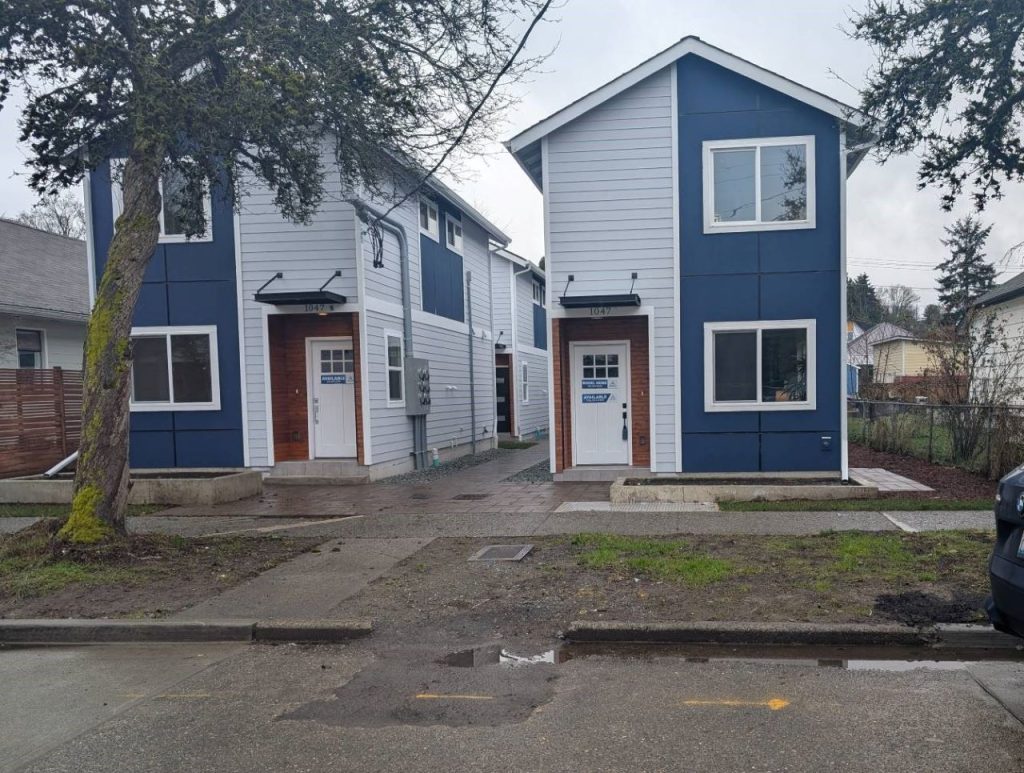Seattle Times Columnist Misses the Mark on South Park Townhome Development
A recent Seattle Times opinion piece by Alex Fryer criticized a new townhome development in South Park, framing it as a "cautionary tale" of upzoning. However, a closer examination reveals that the project is a success story, addressing key challenges facing Seattle: housing affordability and the climate crisis. Fryer’s piece misrepresents the project’s impact and misleads readers about the benefits of sensible urban development.
The development in question replaced a single 590-square-foot house on a 6,000-square-foot lot with six 832-square-foot townhomes. Fryer dismissively refers to this as a "tiny home village," a misleading characterization given the comparable size of the new homes to the original structure. Furthermore, the increase in housing units directly addresses the declining enrollment at the local elementary school, a concern cited by Fryer himself as a negative consequence of upzoning. The six new townhomes provide homeownership opportunities for families, countering Fryer’s assertion that Residential Small Lot zoning doesn’t benefit families.
The affordability of these new homes is a crucial element missing from Fryer’s analysis. Two of the townhomes are listed for around $460,000-$490,000. These prices are within reach for many middle-class and blue-collar workers in Seattle, especially two-income households. A combined income of $131,000-$140,000 is sufficient to secure a mortgage for these homes. Numerous essential workers, including county custodians, city library associates, bus drivers, medical professionals, and educators, fall within this income bracket. This development provides a pathway to homeownership for these vital members of the community, a positive outcome that Fryer’s article ignores.
Fryer’s criticism also extends to the lack of trees on the property at the time of his writing, presenting it as evidence of environmental harm. However, this was a temporary condition due to the timing of landscaping. A publicly available arborist’s report clearly outlines plans to plant 12 new trees on the lot, in addition to preserving two existing street trees. This will result in a net gain of ten trees, enhancing the green space in the area. Fryer’s failure to acknowledge this planned greenery demonstrates a selective presentation of facts to support his narrative.
The South Park townhome development exemplifies how thoughtful urban planning can address both housing affordability and environmental concerns. By increasing density near transit and jobs, this project provides more housing options at accessible price points while also expanding the tree canopy. Fryer’s critique not only misrepresents this particular project but also undermines the broader efforts to create a more equitable and sustainable city.
The narrative pushed by Fryer ignores the pressing need for more housing in Seattle. The city faces a significant housing shortage, contributing to escalating prices and pushing homeownership out of reach for many. Increasing density through projects like the South Park townhomes is a key strategy for addressing this crisis. By creating more housing units on existing land, these developments help to moderate price increases and expand access to homeownership. Dismissing this approach based on incomplete or misleading information serves only to perpetuate the housing crisis.
Furthermore, the environmental benefits of increasing density near transit and jobs are well-established. By allowing more people to live closer to their workplaces and public transportation, these developments reduce reliance on cars, resulting in lower greenhouse gas emissions. The addition of trees further enhances the environmental benefits by improving air quality and mitigating the urban heat island effect. Fryer’s selective focus on the temporary lack of trees ignores the long-term environmental advantages of this type of development. His critique ultimately discourages the very solutions needed to address Seattle’s interconnected housing and climate challenges. The South Park townhome project provides a model for how to increase housing options while simultaneously promoting environmental sustainability. By choosing to focus on a narrow and incomplete picture, Fryer misses the bigger story of how innovative urban planning can create a more livable and affordable city for all.


